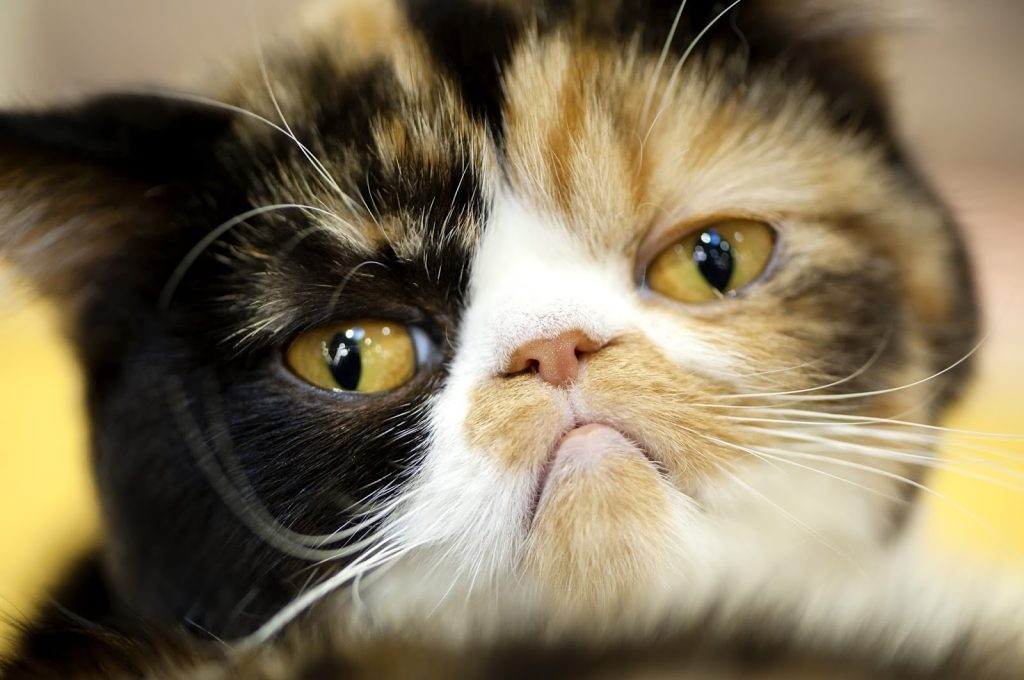Training Strategies for Cats: How to Teach Positive Behaviors

Unlocking Your Cat’s Potential
Training your cat may initially appear daunting, but with the right tools, techniques, and a sprinkle of creativity, you can effectively shape their behavior while simultaneously strengthening the bond you share. One of the most commonly overlooked components in cat training is positive reinforcement, an essential method that promotes desirable behaviors while discouraging unwanted actions.
To implement effective training strategies, it’s vital to first understand feline behavior. Cats have distinct and unique ways of interacting with their environment, and tapping into these behaviors can yield significant improvements. Consider the following aspects:
- Incentives: Whether it’s a preferred treat, enthusiastic praise, or engaging in their favorite playtime activity, these incentives play a pivotal role in motivating your cat. For instance, choose small, soft treats that are easy to consume quickly during training sessions, so your cat remains engaged and eager for the next cue.
- Consistency: Maintaining a consistent routine is crucial for helping cats understand commands and behaviors. For example, always using the same word or phrase when teaching them to sit or stay enhances their ability to recognize and respond to your requests. Set specific times for training to instill this routine.
- Patience: Training takes time, and every cat learns at its own pace. Some might quickly grasp commands, while others may require repeated exposure before showing progress. Be prepared for occasional setbacks and celebrate the small victories along the journey.
Training isn’t just about ensuring your cat behaves well in your home; it also provides opportunities for mental stimulation and enrichment. Engaging them in training can help address common behavioral issues, such as:
- Scratching furniture or surfaces. By teaching your cat to use a scratching post instead, you can redirect their natural instinct while saving your sofa.
- Aggression or play biting. Utilizing toys can channel their energy constructively and reduce the likelihood of aggressive behaviors toward human hands.
- Litter box issues. Training your cat to associate the litter box with positive outcomes can foster proper usage, mitigating messes around your living space.
By dedicating time and effort to training, you empower your cat to exhibit positive behaviors that enrich both their life and yours. Explore diverse and effective training strategies, from clicker training to interactive toys, to transform your environment into a harmonious haven. Understanding your cat’s natural instincts and motivations will lead to a deeper connection, offering both you and your feline companion the joy of coexistence and cooperation.
DISCOVER MORE: Click here to learn how pets can boost your empathy

Effective Training Strategies to Foster Positive Behaviors
When it comes to training your cat, the journey begins with understanding your feline friend’s natural instincts and behavioral patterns. Cats are creatures of habit, often guided by their instincts and environment. By aligning your training methods with these inherent tendencies, you can create a more rewarding and effective training experience. Below are some key training strategies that can transform your cat’s behavior and enhance your relationship.
Clicker Training: A Sound Approach
One of the most effective methods in positive reinforcement is clicker training. This technique involves using a small device that makes a clicking sound to mark the desired behavior at the exact moment it occurs. After the click, immediately follow up with a treat or praise. The sound of the click helps your cat associate the behavior with a positive outcome. It’s a simple yet powerful way to communicate what you want them to do.
Shaping Behavior with Gradual Steps
Another beneficial strategy is shaping, which involves breaking down the desired behavior into smaller, manageable steps. For instance, if you want your cat to jump onto a specific surface, start by rewarding them for approaching it. As they become more comfortable, gradually increase your expectations until they complete the entire action. This incremental approach helps prevent frustration for both you and your cat, making the learning process enjoyable.
Utilizing Interactive Toys
Engaging your cat in playtime with interactive toys not only provides entertainment but can also be an excellent training tool. Puzzle feeders or toys that encourage hunting instincts can keep your cat stimulated. These activities can help redirect negative behaviors like excessive scratching or biting. Additionally, after a fun play session, incorporate commands related to the game, reinforcing positive behavior through association.
Socialization and Environmental Enrichment
Socialization is crucial in any training regimen. Exposing your cat to various environments, people, and other pets can help them become more adaptable and reduce anxiety-related behaviors. Incorporating environmental enrichment—like perches, hiding spaces, and climbing opportunities—can also foster a sense of security and satisfaction, making training sessions more effective. Remember, an enriched environment encourages curiosity and exploration, aiding in the learning process.
Recognizing and Rewarding Success
Positive reinforcement isn’t solely about treats; it extends to verbal praises and gentle petting after successful behavior. Create a reward system that resonates with your cat. For example, if they respond well to affection or playtime, use these forms of encouragement to reinforce good behavior. The aim is for your cat to feel rewarded and appreciated, motivating them to replicate the behavior.
Incorporating these training strategies will lay a solid foundation for fostering positive cat behaviors. By using techniques rooted in understanding and encouragement, you can create a harmonious environment where both you and your feline companion thrive. As you embark on this rewarding adventure, remember that consistency and patience are your best allies in the quest for effective cat training.
| Category | Description |
|---|---|
| Positive Reinforcement | Using treats or praise to encourage desired behaviors. |
| Consistency in Training | Regular practice helps cats understand and remember commands effectively. |
| Understanding Feline Psychology | Knowing your cat’s instincts can help tailor training methods that resonate with them. |
| Interactive Play Sessions | Engaging your cat in play can reinforce positive behaviors while keeping them physically active. |
Training strategies for cats can significantly improve the relationship between you and your feline friend. Utilizing different techniques leads to a better understanding of their needs and behaviors. Positive reinforcement, such as rewarding good behavior with treats or affection, creates a sense of accomplishment for the cat. Moreover, practicing consistency ensures that your cat not only learns the commands but also grasps the routines involved.Moreover, understanding feline psychology plays a crucial role in developing effective training strategies. It allows owners to create a training regimen that encourages cooperation rather than resistance. Engaging in interactive play sessions not only supports physical activity but also serves as a fantastic avenue for reinforcing training in a fun and engaging way. By mastering these training strategies, pet owners can cultivate a harmonious living environment that showcases positive feline behaviors.
DIG DEEPER: Click here to learn more
Building a Trusting Relationship Through Training
In addition to effective techniques, establishing a trusting relationship with your cat is essential for successful training. Cats are inherently cautious animals; thus, building trust can greatly influence their responsiveness to training methods. Here are some strategies to enrich your cat’s training experience.
Establishing a Routine
Cats thrive on routine, and establishing a consistent schedule for training sessions can foster a sense of security. Try to conduct training in the same location and at the same times each day. Over time, your cat will begin to anticipate these sessions, thereby increasing their responsiveness. A predictable environment allows them to focus on learning without distractions, and they will appreciate the stability that training provides.
Patience is Key
Training is not a one-size-fits-all approach, and each cat has its own pace for learning new behaviors. Patience is a vital component in nurturing positive behaviors. Celebrate small victories, and do not be discouraged if your cat takes time to comprehend new commands or tricks. Understanding that progress may come slowly but surely will help maintain a strong bond between you and your feline friend.
Using Positive Language and Body Language
Every cat owner should be aware of how verbal cues and body language can impact training sessions. Use a cheerful tone when praising your cat to reinforce positive behaviors. Your cat can pick up on your enthusiasm, making them more likely to understand that they have done something desirable. Moreover, maintaining an open body posture and avoiding sudden movements can help your cat feel secure during training, further enhancing their willingness to participate.
Creating a Peaceful Learning Environment
Choose a distraction-free setting for training where your cat feels comfortable. Soft lighting and minimal noise can help create a calming atmosphere, thus promoting focus during training sessions. Consider training when your cat is naturally alert, such as after a meal or during their active playtimes. Such environments encourage learning and help ingratiate the training experience into your cat’s daily routine.
Measuring Progress with Observational Learning
When training your cat, being an astute observer allows you to adapt your methods accordingly. Observational learning enables your cat to pick up cues by watching, whether from you or other animals. For instance, if you have another pet that has mastered a command, your cat may learn by observing their behavior. This is particularly effective in multi-pet households and showcases the importance of a well-structured training approach for all animals involved.
Utilizing Professional Resources
Sometimes, consulting a professional animal behaviorist or trainer may be advantageous, especially when dealing with stubborn or problematic behaviors that are difficult to address. Such experts can provide tailored advice and guidance that specifically pertain to your cat’s personality and situation. Engaging with workshops or online courses can also introduce fresh ideas and techniques for enhancing your training approach.
By integrating these strategies into your training regimen, you will help foster a stronger bond with your cat and promote their positive behaviors. These methods not only encourage learning but also make the experience more enjoyable for both you and your feline companion, ultimately leading to a more harmonious home environment. Each interaction during training helps build trust and understanding, paving the way for a rewarding journey together.
DISCOVER MORE: Click here to learn about the effects of a vegetarian diet on your pets
Conclusion: Nurturing Positive Behaviors in Your Feline Companion
Training your cat is not just about teaching them to follow commands; it’s about fostering a mutually beneficial relationship built on trust, respect, and understanding. By implementing the tactics discussed throughout this article, such as establishing a routine, exercising patience, and utilizing positive reinforcement, you can significantly enhance your cat’s learning experience while creating a deeper bond. Remember that each cat has its own unique personality and learning style, which necessitates a flexible approach tailored to their specific needs.
Moreover, embracing a peaceful environment during training, coupled with mindful observation of your cat’s responses, plays a critical role in developing positive behaviors. In multi-pet homes, leveraging observational learning can be an effective strategy, allowing your cat to learn from their companions. When traditional methods and behavioral challenges arise, don’t hesitate to seek guidance from professional trainers or behaviorists who can offer personalized strategies suited to your cat’s situation.
In conclusion, the journey of training your feline friend is as rewarding as it is enlightening. Embrace each training session as a step toward a more harmonious household, where positive behavior flourishes amidst love and support. By investing your time and effort in these strategies, you are not just teaching your cat tricks; you are nurturing a lasting partnership that enriches both your lives. Explore various techniques, stay patient, and watch as your cat blossoms into a well-behaved and content companion.



